Jackie Estrada on the Comic Book People: Photos from the 70s and 80s Kickstarter campaign

I met Jackie Estrada years after I’d first learned of her. An ongoing fixture of the major comics, Science Fiction and Fantasy convention circuits since the 1970s, Jackie was an accepted part of the “insider” fan groups of all three mediums long before she joined the staff of the Comic Con International—San Diego or married popular cartoonist Batton Lash.
Throughout all those years, Jackie was taking photographs of her friends and fellow travelers, capturing candid moments with creators whose careers span literally three generations. All the greats from comics’ Golden Age of the 40s, the Silver Age begun in the late 50s/early 60s, the Bronze Age of the 70s and newer eras were all her willing subjects. In fact, Jackie is still rarely seen without her camera at any of the events she attends to this very day.
Unfortunately, most of these photographs remained unseen by fans, creators and historians alike, despite the fact that Jackie regularly supplied images to authors putting together books on the history of the medium. Still, the majority of her thousands of photos were filed away, and largely unseen.
Now, that’s all about to change with the publication of Comic Book People: Photographs from the 70s and 80s, a collection of her most important, fascinating and downright fun images from her vast collection. Below, Jackie talks about the history of the book and her photography, why she chose to fund its publication with a Kickstarter campaign, and why now is the perfect time to share this volume filled with her memories and brief glances into a world completely lost—one utterly different from today’s larger cons with their 100K+ masses of attendees.
Just so we’re all on the same page, what exactly is Comic Book People?
Comic Book People is a hardcover book of photos that I took at various comic conventions and fan events back in the 1970s and 1980s. That was an era when conventions were a lot smaller, and creators from comic books, animation, undergrounds, comic strips, and other popular arts were easily accessible.
My photos are candid shots of Greats such as (Jack) Kirby, (Jerry) Siegel, (Joe) Shuster, (Will) Eisner, Wally Wood, (Harvey) Kurtzman, Al Williamson, etc., as well as at-that-time “newer folks like Len Wein, Marv Wolfman, Wendy Pini, Chris Claremont, Frank Miller, Trina Robbins, Bill Sienkiewicz, and so on. Each photo will be accompanied by my comments and anecdotes about the person.
Why do this particular book, and why do it now?
Last fall I happened to have a conversation with local San Diego artist Lee Kohse. He was involved with a new start-up company, Webble. One of Webble’s projects is to create an online repository of photos and other artifacts from pop culture events, past and present. After I told him about all the photos I’d accumulated over the years, Webble offered to digitize all my negatives, going back as far as 1974, for a dedicated space on that site, (one) where I would retain all rights to the images. Well, I couldn’t turn that down!
So over the past few months they’ve digitized several thousand of those negatives, not only from the San Diego Comic-Con, but also from World SF, World Fantasy, and other shows I attended in the 1970s, as well as events like APE, SPX, WonderCon, Chicago Comic-Con, Heroes Con, etc. in the 1990s on into the 2000s. Really, it was a no-brainer: Now that I had actual digital files, I could do the book I’ve always wanted to do—and that friends and colleagues had been suggesting I do for years!
And why use Kickstarter, rather than working within the traditional publishing system? And why self publish it? Does the crowd funding system encourage or even allow you to do certain things that you wouldn’t be able to if working with a publisher?
My husband, cartoonist Batton Lash, and I have a company, Exhibit A Press, which has been publishing all his comics and books since 1994. In 2012 and 2013 we conducted Kickstarter campaigns to publish his most recent Supernatural Law recent trades, The Monsters Meet on Court Street and The Werewolf of New York. We have a book distributor that is part of a printing company, Bookmasters, so we are set up to do our own books already.
Kickstarter provides the money to pay for the printing upfront, and we maintain complete control over the project. We certainly don’t have the advantages of the traditional publisher of having a marketing/PR department and wider distribution connections, but we retain a higher percentage of proceeds, so there are trade-offs.
When did you first get the the idea for this project, what changed during the development process, and how long has it taken to get it ready for the Kickstarter campaign?
It’s been something of a whirlwind process.
After going through all of my piles of photos and negative files to prepare them for scanning in November and December, I came up with the title and the idea of limiting the book to the 1970s and 1980s. I really wanted to have the book out in time for the San Diego Comic-Con in July, so I started getting quotes from my printer and from a designer I’ve worked with off and on since the 1970s.
Having done two Kickstarters, I knew about a lot of the hidden costs in funding a project, including having backer rewards made, shipping, packaging, and so on. So I came up with an amount that would cover producing 1,000 books. Batton helped me do the video—which was shot using my digital camera; the sound on it isn’t great, but we do get to showcase lots of the photos. I spent a lot of time thinking about the reward levels and what backers might want in addition to the book itself.
When everything was ready I submitted it to Kickstarter in mid-January and got instant acceptance. I’m thrilled that the initial goal was reached with about 11 days to go, so now I’m going for additional funds to increase the print run to 1500 or more copies before the fundraising ends.
As you noted, you’ve been taking photos for…well, at least a couple of decades, now. Which made me wonder just how much work goes into looking through what must be thousands of photos, looking for the right ones for the book?
The Webble folks gave me a hard drive with all the scanned photos in high resolution, organized by year. I’ve been going through the files and keeping track of all the most significant ones as well as my favorites, and figuring out how they will be grouped in the book. I’m also gathering together ones that will go into Comic Book People Extra, which is a 36-page booklet of photos from parties, panels, art demonstrations, and other events that is a premium for some of the backer levels.
Were there any surprises, or even some real treasured moments that you uncovered, but which you’d forgotten that you’d captured and filed away years ago?
I’m constantly calling out to my husband to come to my computer to take a look at photos I’d forgotten I’d ever taken. I just found one of Jim Shooter with Stan Lee, for instance. And I’d completely forgotten I had photos of Jack Davis with Harvey Kurtzman. I’ve posted on Facebook a picture of Dan Clowes, Jaime Hernandez, and Bob Burden that I hadn’t remembered taking.
I’ve got a great anecdote to go with a Mark Hamill picture, and yes, there are many treasured moments that come to mind, especially when I see photos of dear friends who are no longer with us.
One of the aspects that help make this all extra special is the fact that you were and remain part of the club, so to speak. But that also made me wonder what affect, if any, your status might have had on the photos you’ve taken over the years.
In other words, has being one of the gang always been a good thing for you, as a photographer, or are there downsides associated with it?
I can’t think of any downsides. From the get-go in the mid-1970s, people were used to seeing me everywhere with my Canon ftb—and, later, a Canon F-1—with the flash attachment. The picture I have on the Kickstarter site is a drawing Bill Rotsler did of me captioned “Jackie Estrada, photographer to the stars!”
What got you started taking photos, and what’s kept you interested in continuing to pursue it?
I was a journalism major in college, at San Diego State, and photography was one of the things we needed to master. I learned to shoot with Speed Graphix and twin-lens reflex cameras, develop film, take action shots, etc. But I didn’t get serious about photography until the mid-1970s, when I got my first SLR camera. I took a lot of classes with local photographers and studied composition. I studied all the great photographers and even took an intensive one-week course in Truckee, CA, with the great Garry Winogrand. As a result I developed “the eye,” as my husband calls it–an ability to get the right shot more often than not.
For a while I had my own darkroom. In the late 1970s and into 1980s I was involved with the local photography scene in San Diego and had some of my work appear in shows, including a one-woman color show. I specialized in shooting the local punk/new wave music scene in San Diego as well as in shooting Comic-Con and other shows. I’ve got a lot of people encouraging me to do a book of the punk music photos as well.
Now that everything’s gone digital and I have so many other things going on in my life, my photography these days is pretty much point-and-shoot. But I still get a lot of pretty good images.
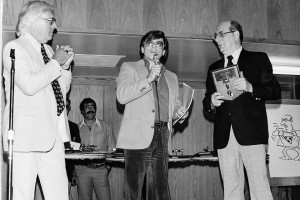
Ray Bradbury presents Julie Schwartz with the Inkpot Award during the 1981 Comic-Con banquet, with assistance from Harlan Ellison
What do you get from working on a project like Comic Book People? It’s obviously a lot of work, and a labor of love that’s required a lot of dedication and time. So, why do it?
My photos and negatives are in boxes and drawers all over the house. I’ve got images that no one’s ever seen but me that I know lots of people would love to see. Finally, I am able to get everything organized in one place and have a venue for sharing pictures that will bring back memories for some people and that other people will just find really interesting. And I’ll get to talk a little about some of the amazing people I’ve met over the last four decades and tell little stories about them.
What do you hope the readers get from the book? Is this just about entertainment, or might you be trying to inject a little bit of educational or historical value into the proceedings, as well?
For people who were around in that era, this will be a memory book, something to remind them of special times and special people. For readers who weren’t around then, they will get a feel for what the comics industry was like back in those days. They’ll see some of their favorite current creators at the birth of their careers, including shots of artists doing drawings of their favorite characters. So there’s a little something for everyone who is a comics or pop culture fan.
So, how can we support the campaign to make this book a reality? Is it just about pledging, or are there other ways that readers might be able to help the cause?
The campaign has reached its initial goal of $18,000, but it would be great to get to $25,000 to significantly up the print run on the book and get it wider distribution. Getting the word out about its existence would be the best way to help, in addition to pledging.
Let’s say someone out there is still on the fence, wondering if this book is for them. Or perhaps they’re thinking that they’ll just wait until they see it at their local bookstore and pick it up then. What might you say to those individuals that might help sway them to support Comic Book People?
I’d suggest looking at the various pledge levels to see the additional rewards. There are postcards of some of the most intriguing images, a 16-month calendar, and a rare poster to be had, among other things. And I’ve just added an exclusive dust jacket to the campaign—it will only be available to Kickstarter backers.
Anything else to add before I let you get back to the campaign?
Thanks for coming up with all these great questions!
Thanks, Jackie, for the kind words. As always, it’s been a real pleasure talking with you, Jackie!
This interview is © 2014 William M.S. Baker. All rights reserved.
_______________________________________________________
Comic Book People: Photographs from the 70s and 80s, its photographs and texts are TM & © 2014 Jackie Estrada or their respective owners. All rights reserved.

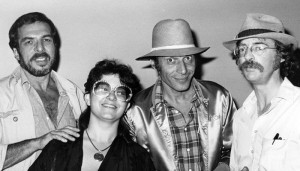
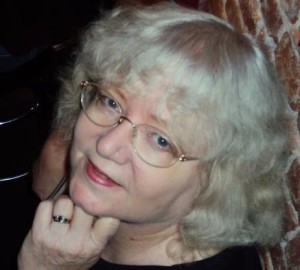
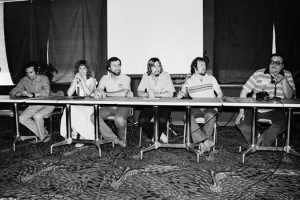
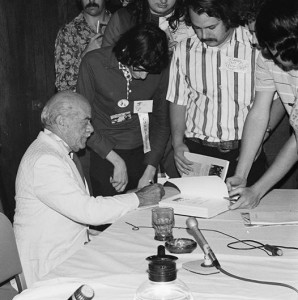

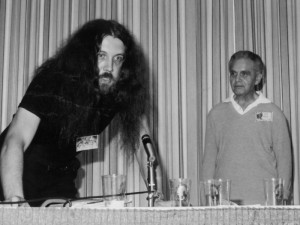
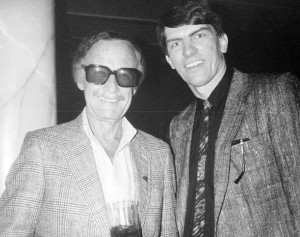
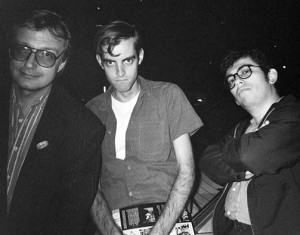


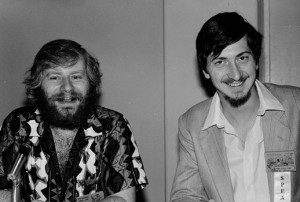
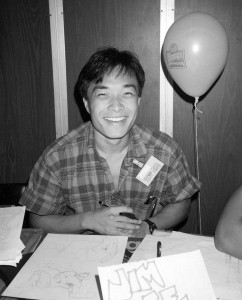
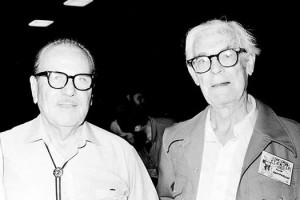
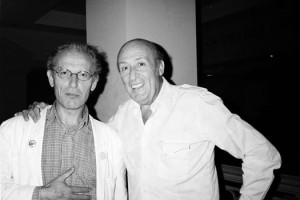
Leave a Reply